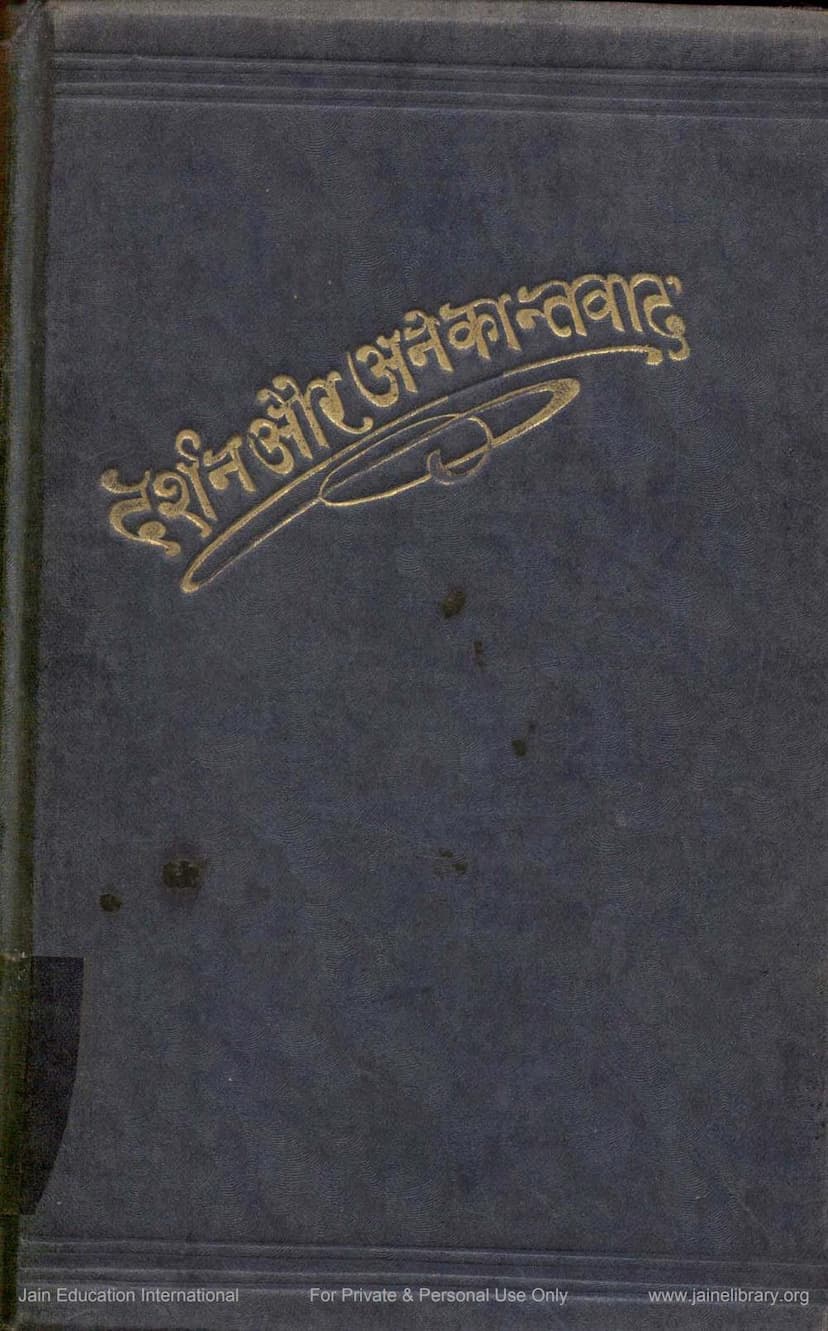Darshan Aur Anekantavada
Added to library: September 1, 2025

Summary
This Jain text, titled "Darshan aur Anekantavada" (Philosophy and Anekantavada) by Pandit Hansraj Sharma and published by Shri Atmanand Jain Pustak Pracharak Mandal in Agra in 1928 (Vikram Samvat 1985), is a significant work exploring the philosophical underpinnings of Jainism, particularly its core tenet of Anekantavada.
The book is a deep dive into Anekantavada, which translates to "non-one-sidedness" or "many-sidedness." The author meticulously explains that this principle is not about advocating for contradictory viewpoints within a single entity but rather about understanding that every object or concept possesses an infinite number of characteristics, and a complete understanding requires acknowledging these various perspectives.
Key Themes and Arguments:
- The Essence of Anekantavada: Sharma argues that Anekantavada is the very soul of Jain philosophy. It posits that reality is complex and multifaceted, and any attempt to grasp it from a single viewpoint is inherently incomplete and potentially misleading.
- Anekantavada Beyond Jainism: A central thesis of the book is that Anekantavada is not solely a Jain doctrine. Sharma dedicates a significant portion of the text to demonstrating how the principles of Anekantavada are found, albeit sometimes in different terminology or forms, within various other Indian philosophical schools, including Vedanta, Sankhya, Yoga, Vaisheshika, Nyaya, and Mimamsa. He cites numerous passages from foundational texts of these traditions to support his claim.
- Comparative Philosophy: The book serves as a comparative study of Indian philosophies through the lens of Anekantavada. It highlights the common threads and convergent ideas across different schools, aiming to foster a sense of universal philosophical inquiry.
- Rejection of Extremism: Anekantavada is presented as a doctrine that avoids extreme viewpoints (ekantavada). It reconciles apparent contradictions by understanding them as relative truths arising from different perspectives. For instance, an object can be considered permanent from one viewpoint (its essence or substance) and impermanent from another (its modifications or states).
- Reinterpreting "Contradictions": Sharma addresses the common criticism that Anekantavada appears to embrace contradictions. He clarifies that these are not true contradictions but rather different facets of reality that appear contradictory only when viewed in isolation. The "Syadvada" (conditional predication) is introduced as the logical framework for expressing these multi-faceted truths, where statements are qualified by "syat" (perhaps, in a certain sense).
- Illustrative Examples: The author uses numerous examples from everyday life, nature, and religious texts to illustrate the principles of Anekantavada, making the abstract philosophical concepts more accessible.
- Scholarly Endorsements: The beginning of the book features testimonials from prominent scholars of the time, such as Shri Vijayananda Surivarya, Shri Kantivijay Ji Maharaj, Kannomal ji, Sukh Lal ji, and Puran Chand Nahar. These endorsements highlight the book's significance, its scholarly rigor, and its utility for both Jain and non-Jain intellectuals. They particularly praise Sharma's ability to explain a complex subject with clarity and depth, and his effort to showcase the prevalence of Anekantavada in diverse philosophical traditions.
- Dedication and Support: The book is published in memory of the generous benefactor Babu Dalchandji Singhi, who funded its publication. The publisher expresses gratitude for his contribution and emphasizes the low price to make it accessible.
In essence, "Darshan aur Anekantavada" is a scholarly exploration aimed at demonstrating the universal relevance and profound philosophical depth of Anekantavada. It seeks to establish this Jain principle not as a sectarian doctrine but as a fundamental approach to understanding reality that resonates across the spectrum of Indian philosophical thought, promoting a more nuanced, tolerant, and comprehensive worldview.